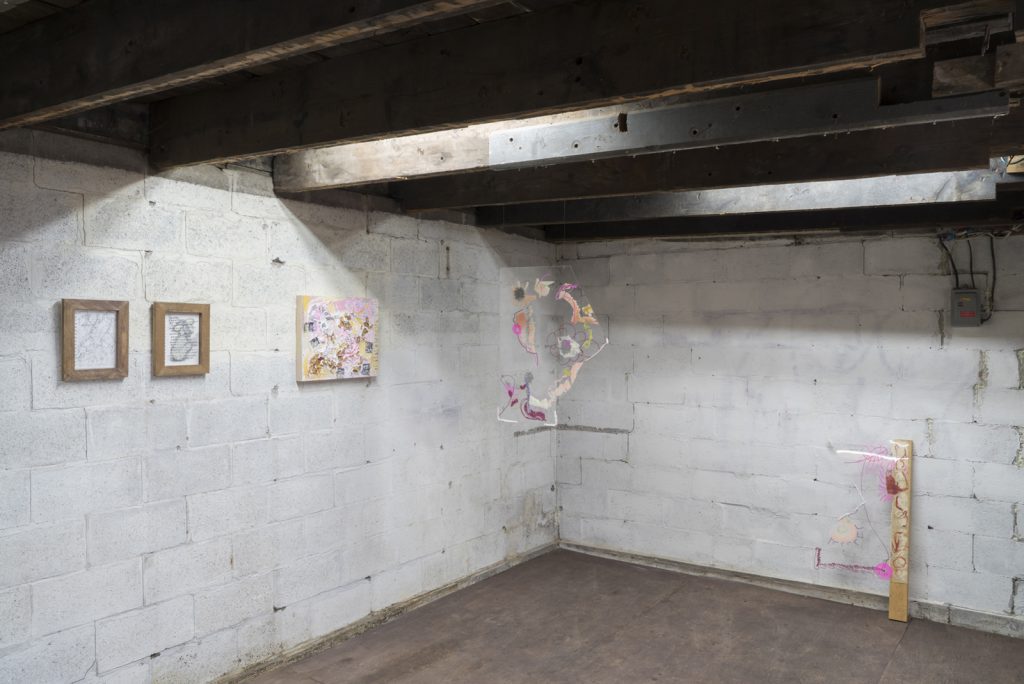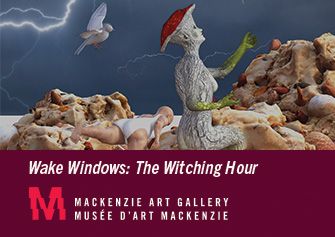the body is a butter brain at Calaboose
29 September 2019By Rosemary Flutur

1
I walk along St Charles street toward Charlevoix Metro, an April afternoon with a chill, and do so with speed, hoping that action, like rubbing sticks, gets me warm. The sun helps a bit—its eye lit wide in an otherwise undisturbed sky—but it is my moving body, my temporary companion, that really thaws me.
I pass through the Metro doors and pay my fare with blemished coins. Today I opt for the escalator over the stairs, not for a quicker descent but for stasis; my body deserves it after all the rapid movement. Forced into action again when the stairs fall flat into the floor, I make my way toward the subway tracks. With each step I move further into the sour air of the Metro’s basement, into an air that never changes, but waits, like breath, to be exhaled. It never does; instead it sits unreplenished in tiled corridors, the city’s wet subterranean lungs.
The car arrives as I reach the platform; I move toward it. The doors open; I enter; an empty seat an invitation for deeper stasis. In stillness I arrive. I tune in and listen. My mind brims and my heart thumps evenly, but hard, which feels like all over. I have just left the opening of Calaboose’s The body is a butter brain and am filled with a galvanized curiosity.
2
There’s an idea that’s often born when trauma occurs, one that gains power and potency with time: I, the mind, am different from the body. It’s the conviction that whatever happened to the body belongs to the body, leaving the mind unscathed. It’s not true, of course, and when the mind cedes in its attempts to get disembodied, it’ll aim for the next best thing: ignoring the body as best it can. But the body, too wise and radical to be dismissed, rings the alarm: fits of shaking, vague pains, nervous breakdowns like clockwork. In each is its message: I exist! My pain is real! Look! At! Me! One can ignore them for a long time it seems, even if they pulse as frequently as the heart.
But eventually—hopefully—one begins the measured process of reconciling the body with the mind. And sometime during this process comes the realization: each time the mind turned away it was only trying to protect itself; it really didn’t know any better. Cause trauma turns illogic into fact, it will make us believe in anything as long as it promises, even briefly, to prevent further pain. When the mind finally listens, it widens, and so does its proverbial ears; the language of body begins to seep in, understood. And when the body realizes it’s finally being heard again, it softens, and this softness leads to expansion. Malleability, too; the body is just as elastic as the mind. Able to change, to heal. The body is limitless, benevolent, and enlightened beyond measure.
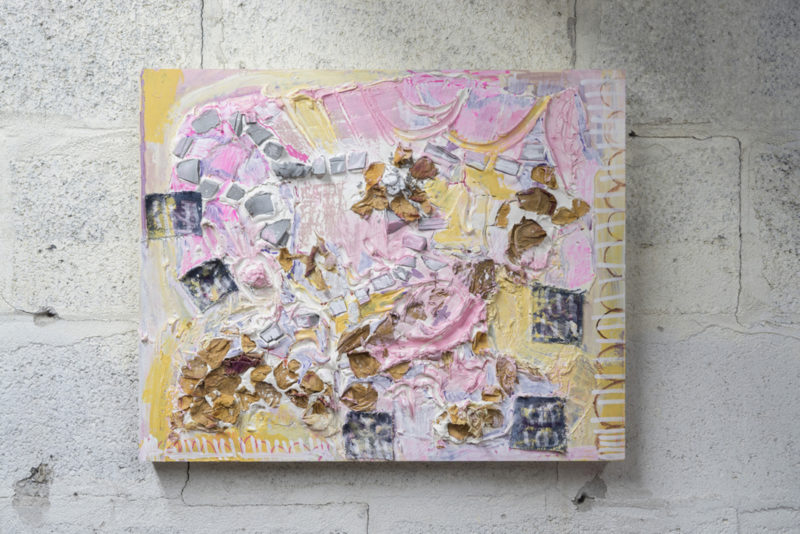
When Laura McCoy tells me about the kind of trust she has in the newly discovered depths of her body, I think of all this. The body is the place she works from and believes in when she creates. For the sake of simplicity I call this place intuition, or the mouth of the body. In order for it to really speak, our intellect has to humble itself, to relinquish control without losing faith, and it’s in this delicate pocket of being where grace grows quickest and joy pulsates loud and regular. When I look at Laura’s art, I sense that it is in and from this delicate pocket that she makes her work. All five of the pieces she exhibits in The body is a butter brain feel like evidence of the serendipity that can come with surrender. When our mind lets the body lead they get closer, congruent, and in wholeness we start speaking our truths clearest. I know Laura is telling hers, and rigorously. Her art is a resolute movement towards integration.
The fact Laura works from the body is also evident in that I see body in her work. Both Custard and Shame (2018) and Fear with Cream (2019) are thick, soft, pasty; I get the impression of flesh and what comes out of it. “Athero”, which comes from the Greek word “athere”, meaning groats, comes to mind. It’s most often used to describe the fatty material that forms deposits in the arteries. Gruel-like sticky aggregate. Paint, clay, plaster, scraps, all layered up. My body reacts in some kind of conflicted sense of recognition, like when I feel disgust and desire at once. It’s a visceral reaction, activating my gut, making me vibrate. I realize, looking at these works, that they simultaneously make me feel sick but also exhilarated, and I get the strange urge to involve my body too, to want to touch them with my tongue.
My personal favourite are the dried flower petals, those tender souvenirs that figure into the collected flurry. Flowers, or a suggestion of their shape, appear in all of Laura’s works, scribbled or pasted-on urge-like. This softens me, my body, the little girl that lives within it. And when I let this little girl speak from my depths, she points something out to me. On her hanging sculpture Sorry Again (2018), Laura covers the sharp edges of the plastic in clay to shield us from injury. But the top edges aren’t covered, where adults can reach easily; it’s the ones closer to the ground that are protected, low enough for little hands to reach. Consciously or not, Laura protects the smallest and most vulnerable of her viewers. I think this explains not only the kind of artist, but the kind of person that she is: considerate, caring, generous. This is woven into all the works she creates.
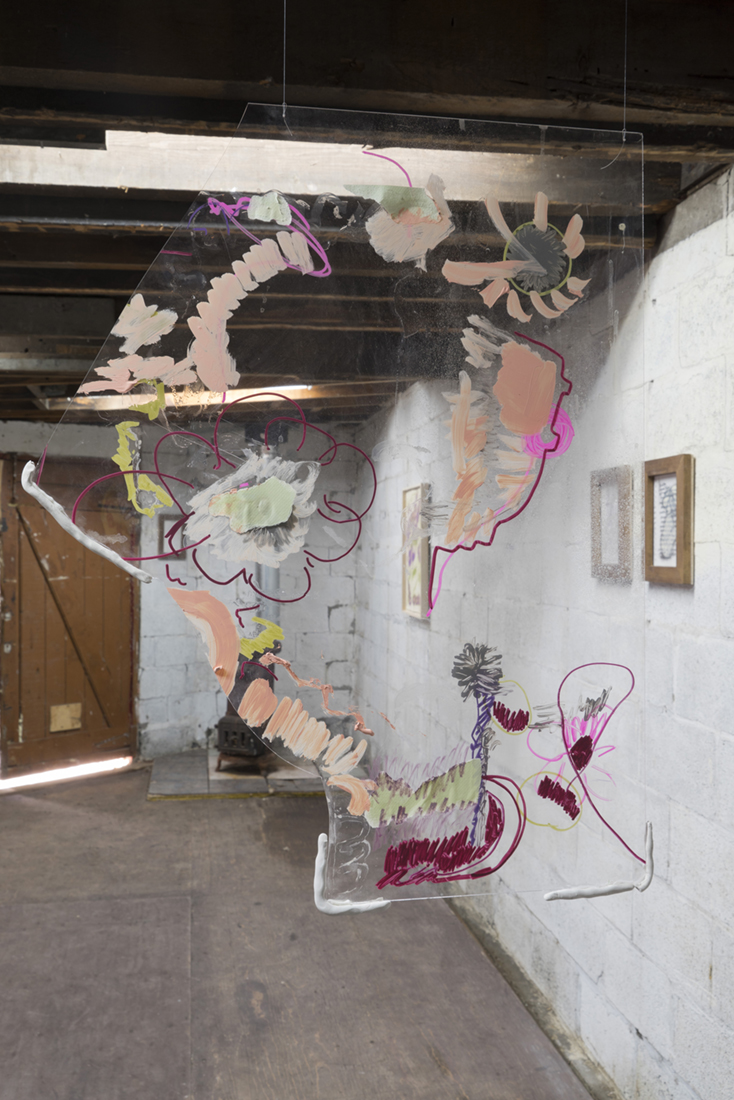
3
I’m delighted by the observation the little girl has made, so I allow her to be our guide for the rest of the opening. She’s happy she’s been given agency, the proverbial mic, and excitedly she rushes us over to A rosery (2019), one of Lucas Regazzi’s charged and nebulous drawings, produced with a mix of graphite and chalk pastels. It’s the figure, mostly, that draws her in. That draws me in, from that gut place of recognition. Sitting languidly on its heels in overlong grass, surrounded by candy coloured flowers that float around and against its portly figure, it stares out with a smile. Eyes and mouth are big, so big that they extend beyond their borders. It’s like the figure is so laden with feeling that it cannot be contained, and yet its gaze and grin are completely devoid of it. Empty. It’s a contradictory state, but I have learned that seemingly polar opposite states can co-exist and connect like an ouroboros; if you curl the ends to almost touch for long enough, one end will eventually bite onto the other.
When I’d previously experienced this intensity of feeling, especially such a melange of them, my traumatized body would shut down, as if it didn’t have enough space for it all. Like the features of Lucas’s hazy figure, the emotions would push—then break—out. But if my body could contain them, it wouldn’t explode; instead it would disorganize. I’d begin to detach from my immediate surroundings until I could only receive reality as an implication. Emotion was still there within me, but it was at the end of a long hallway, much too far to reach. I was beginning to understand what the recognition in my gut was when I first saw A rosery (2019). I’ve been there too; the plump little guy in the frame is dissociating.
Dissociation is a kindness from the body to the mind though. A coping mechanism, a kind of shielding from further harm and a way to deal with trauma. Lucas later tells me that drawing came from one of these places—a desire but also a need to cope with various shades of pain. Dangerous emotions can make a person dissociate, yes, but their weight can also make a person seek catharsis. Some popular options, like drugs or sex or anger or food (et al.) are all fleetingly remedial. I mean actual catharsis—the kind that’s rehabilitative, that ameliorates for the long term. When I see Lucas’ work, I sense this kind of release. A processing, a striving. When Lucas makes work, he does it from his depths, just like Laura, and in his vulnerability reveals himself. His work becomes remedy, not only for himself but for his viewers too; it’s the recognition we strive for in our daily encounters. Vulnerability is the ingress to veracity too, to habitual truthfulness. As with Laura’s work, I know he’s telling us the truth. Again, what that truth is I don’t know. And I don’t want to know their truths, not entirely. It’s impossible to give all of ourselves away anyway, hard as we may try. There are some secrets we must keep, not for choosing to withhold them, but because we ourselves are not certain what these secrets are.
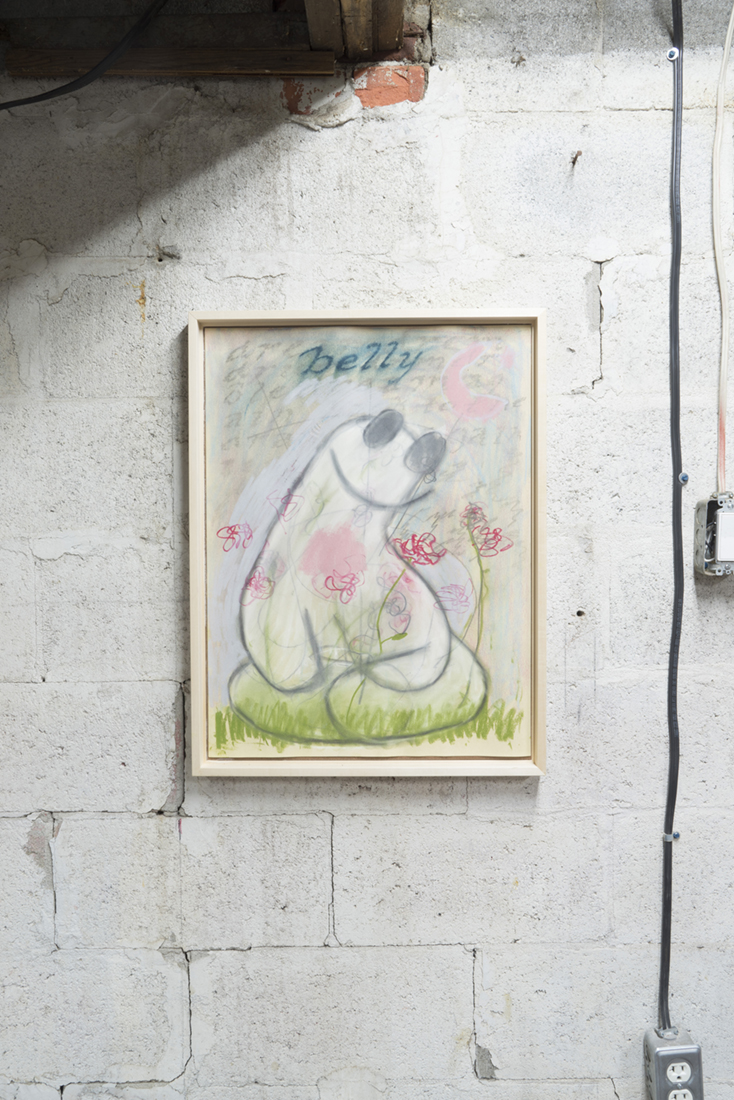
The closest I can get to finding out is in Lucas’s drawings that contain words, like I am capable of expansiveness (2018). But I’m still not close, not even a little bit. They feel personal, obscure, quite literally too; there are some words that are shaded in a way which I can’t make out. It doesn’t matter though. I see their function as further processing; words with such weight that they feel more like things to address, to redefine, to let inhabit us without pretence or harm. When Lucas writes “I am capable of expansiveness” he inches closer toward that regenerative form of catharsis many of us seek. It is a statement that counters self-doubt. And if you say something often enough, eventually it becomes true.
4
It’d be amiss of me not to mention Lena Suksi’s text for The body is a butter brain, which I’ve read many times for the simple reason that it excites me. I’ve always believed exhibition texts should be less didactic and more expressive. Equivocal not explanatory. To leave room for the viewer, much like one of the works in the show. Lena’s text—profuse, scrupulous—is just this. One of butter brain’s many limbs. When I read it, nothing is revealed about the show; it doesn’t explain or contextualize anything. Yet I understand more, feel more connected to it. Nod yes IRL and deep down too. Knowing is nothing without understanding, and I’m reminded of this when I read her text. “There’s so much to be retrieved from the garden, under the bed, in the recesses of our tender bodies,” she writes. “More and more and more than we know, even with the old pains of digging.” Another: “Wound up, as when I am like a toy with a key, or whatever fear or food or height gets the heart rate up, I can be wound down.” (1) What I do understand, after reading the text, is what makes the whole of The body is a butter brain so impactful—it’s a show that’s teeming with hope.
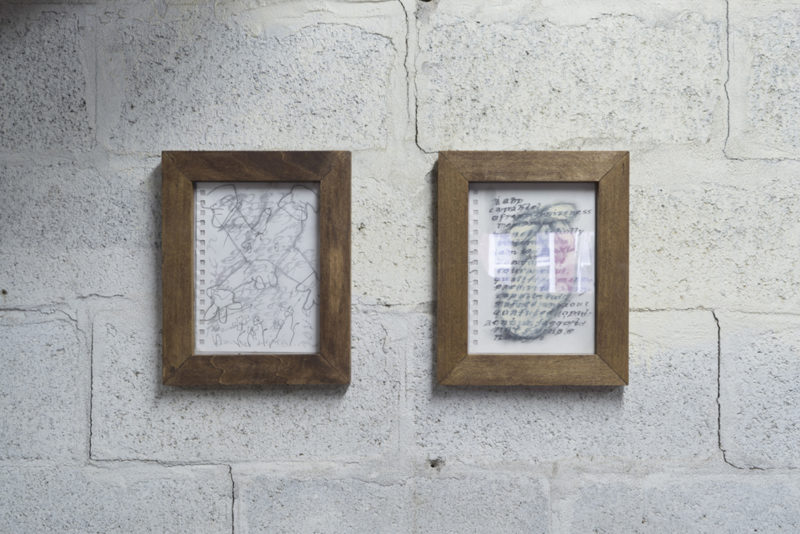
Although Lena is a traditional poet, Lucas and Laura are certainly visual ones (self-proclaimed too). And the true poet has faith. This faith persists despite many of them being dysthymic, as life gives all of us reason to be. Trauma, pain, poverty, life, may trick the poet into believing they’ve lost faith, or hope, or beauty, but they never do. These things never disappear, they only hide. It’s people like Laura, or Lucas, or Lena, that go searching for them—for the first time, or repeatedly—and get illuminated in the process. Then they do or make things, afflatus-like, that illuminate others too.
C.D. Wright said, “It is a function of poetry to locate those zones inside us that would be free, and declare them so.” (2) The body is a butter brain shares the same function; it too is poetry.
1. Lena Suksi, exhibition text for “The body is a butter brain”, 2019.
2. C.D. Wright, Cooling Time: An American Poetry Vigil. Cooper Canyon Press, 2005.
The body is a butter brain ran from April 6 – 27, 2019 at Calaboose in Montreal.
Feature image: Installation view of The body is a butter brain. Photo by Dante Guthrie courtesy of Calaboose.

